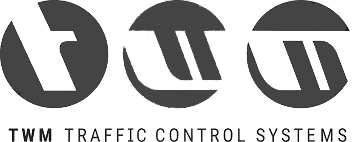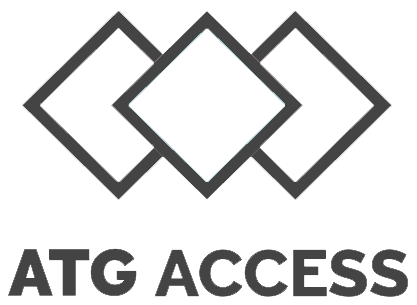Altimex delivers high-reliability printed circuit boards (PCBs) for military and defence applications, backed by defence-grade certifications and comprehensive end-to-end manufacturing solutions.
Military and Defence PCB Applications We Can Serve
At Altimex, we manufacture high-reliability PCBs tailored for the rigorous demands of military and defence environments. Our engineering and production processes are built to ensure dependable performance in mission-critical and extreme operational conditions.
From ground-based systems to advanced defence platforms, whether you’re developing tactical communications, weapons guidance, or surveillance technologies, we deliver trusted circuit board solutions for:

Command and Control Systems

Secure Communication Equipment

Unmanned Aerial Vehicles(UAV) and Drone Electronics

Weapons and Missile Guidance Systems

Radar And Surveillance Arrays

Navigation and Targeting Systems

Power Distribution and Control Modules

Vehicle and Aircraft Interface Systems
Why Work With Altimex?

25+ Years Of Experience

Fast Turnaround Time

Tailored
Solutions

Building Long-Term Partnerships

Certified & Experienced Team
Types of PCBs We Can Manufacture for Military and Defence
At Altimex, we have the ability and expertise to manufacture a wide range of PCBs for military and defence applications.
Flexible PCB
Designed for confined spaces and harsh operational environments, flexible PCBs provide military systems with enhanced durability, vibration resistance, and space-saving adaptability.
Custom PCB
Altimex develops bespoke PCBs to meet exacting military specifications, ensuring optimal performance, reliability, and full compliance with defence industry standards.
Multilayer PCB
Ideal for sophisticated defence electronics, multilayer PCBs support high-density circuit designs, EMI shielding, and superior signal integrity in compact, rugged formats.
Double-Sided PCB
Enabling greater circuit complexity within limited space, double-sided PCBs are well-suited for command systems, secure communications, and control system integration.
Single-Sided PCB
Cost-effective and dependable, single-sided PCBs are used in simpler military applications where performance and rigorous quality control remain critical.
Interested In Military and Defence PCBs?
Get in touch with us and a member of our team will reach out to you.
Either use the contact form on our website or call us on +44 1829 741262

Why Are PCBs Important for Military and Defence?
Printed Circuit Boards (PCBs) are critical components in military and defence systems, powering everything from command and control units to secure communication and navigation equipment. These boards must be exceptionally reliable because they operate in some of the harshest environments imaginable—extreme temperatures, intense vibration, and rapid deployment conditions. That’s why precision and quality in their design and manufacturing are paramount.
A well-crafted PCB ensures that defence systems function reliably and securely under mission-critical conditions. Simply put, without high-quality PCBs, modern military technology wouldn’t be possible.
Proud to have worked with










Bespoke Military and Defence PCB Capabilities
At Altimex, we understand that every military and defence project is unique. That’s why we offer custom PCB solutions tailored specifically to your mission requirements.
From complex multilayer boards to flexible designs, we use advanced materials and precise manufacturing processes to ensure your PCBs perform flawlessly in the most demanding and extreme operational conditions.
Get In Touch Today For Military and Defence PCBs
If you have a query about our services or feel like we could help you, please get in touch by filling the form out below or by calling us on 01829 741 262.
Frequently Asked Questions
Military PCBs must comply with strict standards that ensure performance and reliability in demanding conditions. Commonly referenced standards include MIL-PRF-31032, which covers performance specifications for rigid and flexible PCBs, and MIL-STD-981 for testing durability under thermal and mechanical stress. IPC-6012 Class 3 standards are also critical, requiring high-reliability PCBs suitable for high-performance military equipment. These standards dictate aspects such as material quality, manufacturing processes, testing, and documentation.
Adherence ensures PCBs can withstand vibration, temperature extremes, humidity, and electromagnetic interference, maintaining functionality during critical defence operations.
Military PCBs differ significantly from commercial-grade PCBs in their materials, design, and testing. They use advanced substrates and thicker copper layers to handle higher current loads and thermal stresses. Protective coatings guard against moisture, dust, and chemical exposure. Military PCBs undergo rigorous testing, including thermal cycling, vibration, and shock tests, to verify their robustness.
Additionally, they comply with strict military standards to guarantee long-term reliability in extreme environments, unlike commercial PCBs, which are typically designed for less demanding conditions and shorter lifespans. This makes military PCBs more expensive but vital for mission-critical applications.
Military-grade PCBs use specialised materials selected for durability, thermal stability, and electrical performance. Common substrates include polyimide, Rogers laminates, and Teflon, which offer high heat resistance and excellent dielectric properties. These materials help PCBs operate reliably in extreme temperatures and harsh chemical environments. Surface finishes like ENIG (Electroless Nickel Immersion Gold) and protective conformal coatings further improve resistance to corrosion, moisture, and abrasion. The combination of these materials ensures that military PCBs maintain structural integrity and signal quality, even during prolonged exposure to challenging conditions in the field.
Reliability is paramount in defence PCBs because these boards operate in mission-critical equipment where failure is not an option. Defence systems often function in extreme conditions, including high shock, vibration, temperature fluctuations, and electromagnetic interference. A PCB malfunction could lead to loss of communication, navigation errors, or weapon system failures, potentially putting lives at risk. Therefore, military PCBs must consistently deliver dependable performance throughout their operational lifetime. Manufacturers focus on rigorous design, testing, and quality control processes to eliminate defects and ensure PCBs meet exacting reliability standards mandated by defence contracts.
Flexible PCBs use bendable materials, allowing them to conform to irregular or tight spaces within military equipment. Their flexibility offers improved resistance to vibration and mechanical stress, which is common in defence environments like vehicles and aircraft. Flexible PCBs enable more compact and lightweight designs, crucial for applications such as wearable soldier systems, unmanned aerial vehicles (UAVs), and portable communication devices. These PCBs also facilitate complex routing and reduce the need for connectors, increasing overall system reliability by minimising failure points in demanding operational conditions.
Multilayer PCBs contain multiple conductive layers separated by insulating materials, enabling complex and compact circuit designs essential for sophisticated military electronics. This layered approach increases circuit density, allowing integration of high-speed signal routing, power distribution, and ground planes within a small footprint. Multilayer PCBs provide superior electromagnetic interference (EMI) shielding and improved signal integrity, which are vital for radar systems, secure communications, and advanced avionics. Their compactness and reliability make multilayer PCBs indispensable for modern military systems requiring high functionality in limited space.
Defence-grade PCBs undergo extensive testing to ensure they meet military specifications. This includes environmental tests such as thermal cycling to simulate extreme temperature variations, vibration and shock testing to mimic operational stresses, and humidity exposure to assess moisture resistance. Electrical testing verifies signal integrity and functionality under load. Visual inspections, X-ray imaging, and automated optical inspection identify manufacturing defects like shorts or misalignments. These rigorous tests ensure the PCBs can withstand battlefield conditions without failure, providing confidence in their performance for critical defence applications.
Electromagnetic interference (EMI) can severely impact military PCBs by disrupting signal transmission and causing malfunctions or data corruption in sensitive electronics. Given the dense electronic environment of modern military platforms, managing EMI is critical to ensure secure and stable system operation. Defence PCBs incorporate design strategies such as shielding layers, ground planes, and controlled impedance traces to minimise EMI effects. Additionally, the use of specialised materials and proper component placement helps reduce electromagnetic emissions and susceptibility, safeguarding critical communications and control systems in electronic warfare environments.

